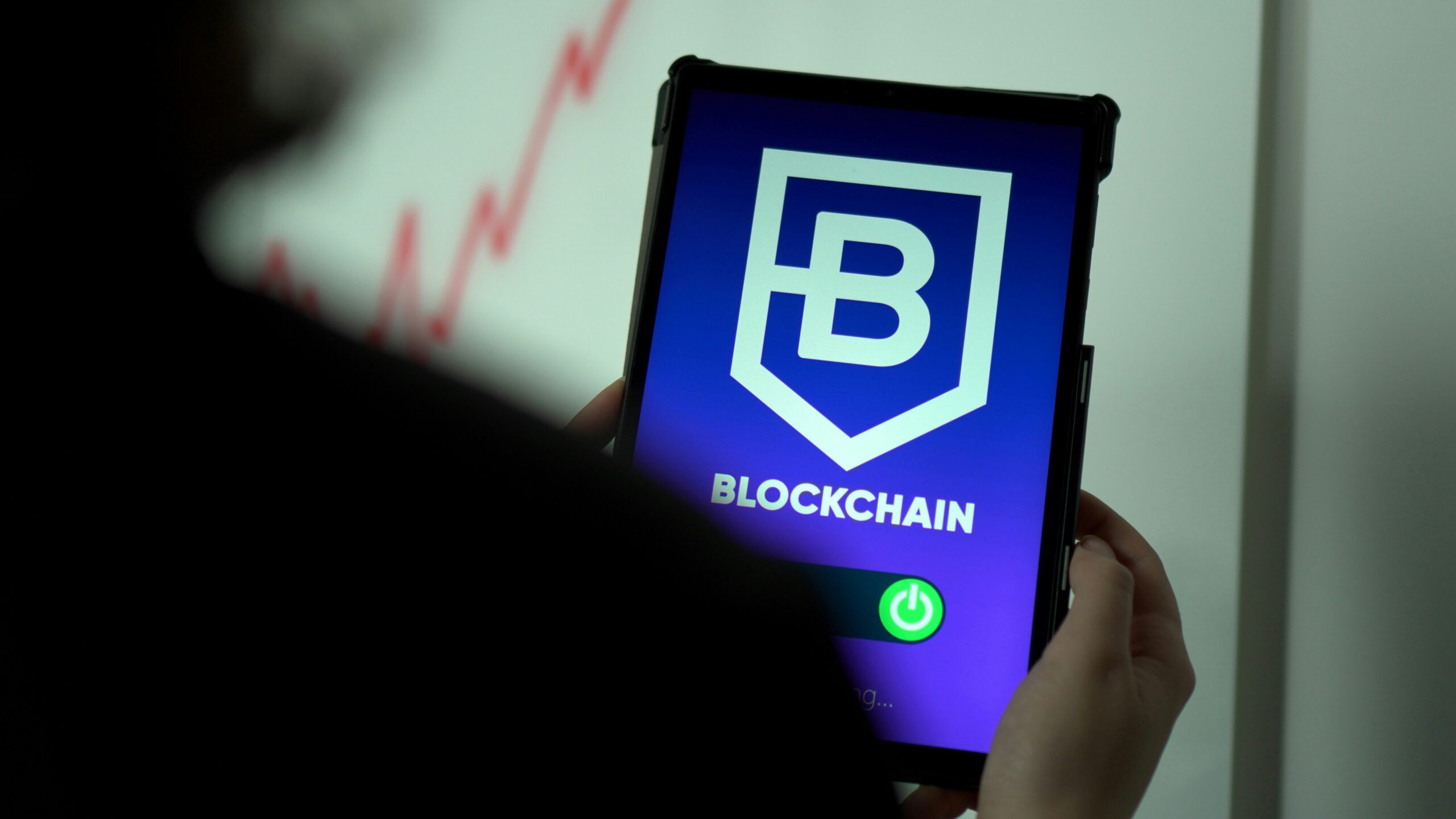Table of Contents
Blockchain technology is transforming the travel industry, offering enhanced security and streamlined processes. With its decentralised nature, the blockchain network allows for direct connections between travellers and service providers, cutting out intermediaries and reducing costs. Blockchain’s immutable and transparent features ensure that transactions are secure and tamper-proof, providing travellers with peace of mind.

The rise of blockchain in the travel sector is also bringing efficiency improvements. By integrating blockchain solutions, travel companies can replace fragmented systems, drive efficiencies, and significantly mitigate security risks. This not only enhances the overall travel experience but also builds trust among travellers by safeguarding their personal information.
Moreover, blockchain enables travellers to manage their own data, leading to personalised and more enjoyable journeys. By leveraging blockchain, the travel industry is stepping into a future where security, efficiency, and customer satisfaction are greatly enhanced. This powerful technology holds the potential to revolutionise how we travel, making it more secure and customer-focused.
Understanding Blockchain Fundamentals

Blockchain technology is a powerful tool that enhances travel security by providing a decentralised, tamper-proof way of recording transactions. A blockchain is a digital ledger that records transactions across multiple computers. A blockchain database is decentralized and distributed across multiple nodes, with identical copies held on multiple computers across a network, making it difficult to hack or cheat the system. This section breaks down the essential elements of blockchain, covering the technology itself, the different types of networks, and the concept of a distributed ledger.
Blockchain Technology Explained
A blockchain is a digital ledger that records transactions across multiple computers. Each transaction is added to a block, and these blocks are linked together in a chain. The most important feature of blockchain is its immutability. Once a block is added, it cannot be altered or deleted. This ensures that all records are permanent and tamper-proof.
The Bitcoin blockchain is a prime example of how blockchain technology is used to record Bitcoin transactions and ensure transparency and security.
Blockchain technology uses cryptographic techniques to secure data. Every block is encrypted with a complex algorithm, making it extremely difficult for unauthorised parties to alter the data. This is especially important in the travel industry, where personal information and payment details must be protected.
Moreover, the decentralised nature of blockchain means there is no single point of failure. Even if one node in the network is compromised, the system as a whole remains secure. This enhances the reliability of blockchain networks.
Public and Private Blockchain Networks
Blockchain networks can be classified into public and private types. Public blockchains are open to anyone who wants to participate. Bitcoin and Ethereum are examples of public blockchains. These networks are maintained by a large number of nodes that validate transactions collectively.
Public blockchains are highly secure due to their vast size and decentralised nature. However, their openness can sometimes result in slower transaction speeds due to the need to achieve consensus among many participants.
Private blockchains, on the other hand, are restricted to a specific group of participants. They are typically used by businesses and institutions for internal purposes. These networks offer faster transaction speeds and greater control over who can access the data. Private blockchain networks, such as Quorum, are designed for use in private or consortium blockchain networks. In the travel industry, private blockchains can be used to manage sensitive data securely among trusted partners.
Distributed Ledger Technology
Distributed Ledger Technology (DLT) is the backbone of blockchain. Unlike traditional databases, a distributed ledger is spread across multiple locations or participants. A blockchain functions as a distributed database, maintaining a secure and decentralized record of transactions. Every participant has a copy of the entire ledger. This ensures transparency and trust among all parties involved.
In a distributed ledger, any changes or transactions are reflected across all copies simultaneously. This eliminates the need for a central authority or intermediary. For the travel industry, DLT can streamline processes such as booking, payments, and loyalty programs by providing a single, consistent source of truth.
Moreover, DLT reduces the risk of fraud and errors because any discrepancies can be quickly identified and corrected by the network. This level of security and transparency is crucial for maintaining the integrity of travel-related transactions and records.
Blockchain in Travel Security
Blockchain is transforming travel security by enhancing data security, streamlining payment processes, and using smart contracts for automated transactions. This technology ensures the safe handling of sensitive information while reducing fraud risks and integrating secure, efficient systems. Each blockchain transaction is verified by multiple nodes, ensuring higher accuracy and preventing double-spending.
Enhancing Data Security
You can rely on blockchain to secure your travel data. Blockchain uses cryptographic hash functions to protect information. Each block of data is encrypted and linked to the previous block, forming an immutable chain. This makes it nearly impossible for malicious actors to alter or delete data. Blockchain records are immutable and chronologically linked, ensuring data integrity and security.
Public blockchain networks provide transparent and secure access. They enable you and stakeholders in the travel industry to verify and track data without intermediaries. For more controlled privacy, enterprises may use private blockchain networks. These offer limited access only to authorised users, thus increasing security without compromising confidentiality.
Streamlining Payment Processing
When it comes to payments, blockchain revolutionises the process by making it swift and secure. By replacing fragmented systems with blockchain, the travel industry can significantly reduce costs and mitigate fraud. Transactions on a blockchain are encrypted and verified by network participants, ensuring transparency. The Bitcoin blockchain records every single Bitcoin transaction, providing a transparent and secure payment process.
Using blockchain protocols, you can handle transactions in near real-time, eliminating delays caused by traditional banking systems. The adoption of cryptocurrencies offers additional benefits, such as reduced transaction fees and bypassing currency exchange hurdles. This makes international travel payments simpler and more efficient for all parties involved.
Smart Contracts for Automated Transactions
Smart contracts are a key component of blockchain technology that automate and streamline transactions. These self-executing contracts operate on blockchain protocols, triggering actions when predefined conditions are met. Different blockchain protocols support various applications, including modern voting systems and financial transactions. This removes the need for intermediaries, reducing both delays and costs.
In travel, smart contracts can automate several processes, such as booking reservations, handling travel insurance claims, and managing loyalty programmes. For instance, if a flight is delayed, a smart contract can automatically process compensation without requiring you to file a claim. This leads to a more seamless and efficient experience, enhancing customer satisfaction and operational efficiency.
Comparing Blockchain with Traditional Systems
When comparing blockchain with traditional systems, it is important to look at how each handles data storage and financial transactions. Blockchain technology and traditional databases differ significantly in how they store and verify data. A blockchain database is decentralized and distributed, making it more secure and tamper-proof compared to traditional databases. Each has its own strengths and weaknesses depending on the use case.
Blockchain Versus Traditional Databases
Blockchain technology and traditional databases differ significantly in how they store and verify data. A traditional database is typically managed by a central authority, such as a business network or a third-party administrator. Data in these systems can be more easily altered, making them susceptible to tampering and hacking.
Blockchain, on the other hand, uses decentralised ledgers where multiple copies of the data are stored across numerous nodes. This decentralisation makes the blockchain tamper-proof and highly secure. Advanced cryptographic techniques ensure data integrity, and every transaction is logged in a way that is transparent yet virtually impossible to alter.
This all-or-nothing approach is a vast improvement over traditional systems where individual permissions and security breaches can lead to data being compromised. In contrast, the transparency and security features built into blockchain systems provide enhanced trust and security in data management.
The Role of Financial Institutions
Financial institutions play a significant role in traditional business networks, functioning as intermediaries that facilitate transactions. These institutions use centralised databases to manage and verify transactions, such as bank accounts and loans. Their involvement often leads to higher costs and longer transaction times due to the need for centralised verification.
Blockchain technology can reduce or even eliminate the need for these intermediaries. By using smart contracts, blockchain can automate and speed up payments and other financial transactions without the need for a central authority. This not only reduces costs but also increases transaction speed and efficiency.
For example, blockchain streamlines the settlement process between different entities in the travel industry by removing third-party verification and enabling quicker, more secure transactions. This way, businesses can avoid the delays and fees typically associated with traditional financial institutions and their centralised systems.
Transactional Integrity and Verification
Blockchain technology offers a secure and efficient means to validate and record transactions, making it an integral part of travel security. By providing robust mechanisms to prevent fraudulent activities and securing transaction integrity, blockchain ensures a more reliable system. Each blockchain transaction is verified by multiple nodes, ensuring higher accuracy and preventing double-spending.
Validating and Recording Transactions
Blockchain technology validates and records transactions through a decentralised network. Each transaction is verified by multiple nodes in the network, ensuring its authenticity. Once verified, the transaction is recorded in a block, which is then added to a chain of previous transactions.
This process creates a tamper-proof ledger, providing a transparent and immutable record of all transactions. It ensures that each step in the transaction process is documented and accessible, helping to minimise errors and discrepancies.
Preventing Fraudulent Activities
One of the key strengths of blockchain in travel security is its ability to prevent fraudulent activities. Each transaction goes through a thorough verification process before being recorded on the blockchain. This makes it extremely difficult for anyone to alter or falsify transaction data.
By using digital certificates and cryptographic keys, blockchain ensures that transactions are secure and authenticated. Users can trust that the data they interact with is legitimate, reducing the risk of fraud. This is particularly important in the travel industry, where secure and verified transactions are crucial.
Blockchain Mining and Proof of Work
Blockchain mining involves solving complex mathematical problems to validate and add transactions to the blockchain. This process, known as proof of work, requires significant computational power. Miners compete to solve these problems, and the first to succeed is rewarded.
Proof of work ensures that every transaction is securely verified and that only valid transactions are added to the blockchain. This decentralised verification process prevents any single entity from controlling the network, increasing security and reducing the risk of fraudulent transactions.
The Architecture of Blockchain Systems
Blockchain architecture is made up of multiple components, including the blockchain ledger, network participation, consensus mechanisms, and smart contracts. Each of these elements plays a crucial role in ensuring the system’s security, efficiency, and reliability. Different blockchain protocols support various applications, including modern voting systems and financial transactions.
Understanding Blockchain Ledgers
A blockchain ledger is a digital record of transactions that is decentralised and distributed across many nodes in a network. Unlike traditional ledgers, which are usually maintained by a single entity, blockchain ledgers are maintained by all participants in the network.
Every participant has a copy of the ledger, and changes are only made through consensus, ensuring that the data is secure and accurate. This distributed nature makes it resistant to tampering and fraud as altering any single ledger would need altering all copies across the network at the same time.
Network Participation and Consensus Mechanisms
In a blockchain system, network participation involves multiple nodes, each working together to validate and record transactions. Different consensus mechanisms, such as Proof of Work (PoW) or Proof of Stake (PoS), are used to achieve agreement on the state of the blockchain among participants.
PoW requires nodes to solve complex mathematical problems to validate transactions, while PoS assigns validation power based on the number of digital assets a participant holds. These mechanisms ensure that once a transaction is verified, it is nearly impossible to alter, enhancing the system’s security and trustworthiness.
Smart Contract Implementation
Smart contracts are self-executing agreements with terms written into code, automatically enforcing and executing them when predefined conditions are met, eliminating intermediaries.
They are stored and replicated on the blockchain ledger, ensuring transparency and immutability. This makes them particularly useful for travel-related transactions, as they can automatically handle bookings, cancellations, and payments in a secure manner. By embedding rules and conditions within the blockchain, smart contracts improve efficiency and reduce the likelihood of disputes or fraud.
Impact on Travel Security
Blockchain technology has proven to be a key driver in enhancing travel security. Blockchain records are immutable and chronologically linked, ensuring data integrity and security. It offers secure personal data management, robust document verification, improved supply chain traceability, and streamlined internal audit processes. Below are detailed insights into each aspect of its impact.
Securing Personal Data and Document Verification
Blockchain ensures that personal data and travel documents are stored securely, reducing the risk of identity theft. Data saved on the blockchain is encrypted and can only be accessed with the proper permissions.
This is particularly effective for passports, visas, and other identification forms, which can be verified quickly and accurately. Travellers no longer need to worry about their sensitive information being tampered with or duplicated.
Blockchain’s immutable nature means that once information is recorded, it cannot be altered without detection. It ensures that the authenticity of documents remains intact and gives you peace of mind while travelling.
Supply Chain Management and Traceability
Blockchain applications in supply chain management offer new levels of transparency and trust. By tracking the journey of goods and services from origin to destination, you can avoid delays and inefficiencies.
You gain real-time insights into where and how your luggage or cargo is being handled. This visibility is crucial for maintaining the integrity of transported items and ensuring they arrive safely.
Supply chains using blockchain technology can trace any discrepancies or issues back to their source quickly. This helps in taking instant corrective actions and maintaining the efficiency of travel-related logistics. Every transaction is logged and stored on the blockchain, thus creating an indelible record.
Enhancing Internal Audit Processes
The transparency and traceability offered by blockchain significantly enhance internal audit processes. Each transaction recorded on the blockchain is time-stamped and verified, making audits quicker and more reliable.
Internal auditors can easily access accurate, unchangeable records and track every activity. This ensures compliance with relevant regulations and helps detect fraudulent activities promptly.
You can trust that the audit process will be more efficient and thorough, helping maintain high-security standards within the travel industry. Blockchain users experience reduced risks and increased accountability thanks to these detailed and verifiable records.
Adopting Blockchain for Travel Security
Adopting blockchain technology in the travel industry can enhance security and streamline processes. Despite its benefits, there are challenges and considerations to keep in mind.
Different countries have varying regulations on data privacy and blockchain usage. A blockchain functions as a distributed database, maintaining a secure and decentralized record of transactions.
Challenges and Considerations
When adopting blockchain for travel security, one major challenge is the initial cost and complexity of implementation. Developing and integrating blockchain systems can be expensive and require specialist expertise.
Additionally, there are regulatory hurdles. Different countries have varying regulations on data privacy and blockchain usage. Ensuring compliance across multiple jurisdictions can be complex.
There’s also the challenge of scalability. Blockchain networks can face performance issues when handling a large volume of transactions, which may impact the user experience negatively.
Lastly, while blockchain eliminates many middlemen, it also requires industry-wide collaboration. Ensuring all stakeholders adopt the technology is crucial for it to work effectively.
Future of Blockchain in Travel
The future of blockchain in travel looks promising with continued advancements and adoption. Consortium blockchain models allow different travel companies to collaborate while maintaining control over their data.
Blockchain-based distributed ledgers provide secure and transparent transaction records. This reduces fraud and enhances trust among travellers and service providers.
Smart contracts can automate and enforce agreements in real time. For example, if a flight is delayed, compensation can be automatically processed.
As more travel companies explore blockchain technologies, innovations like digital identities and tokenised travel rewards are expected to become commonplace. This will not only enhance security but also provide richer, more personalised travel experiences.






